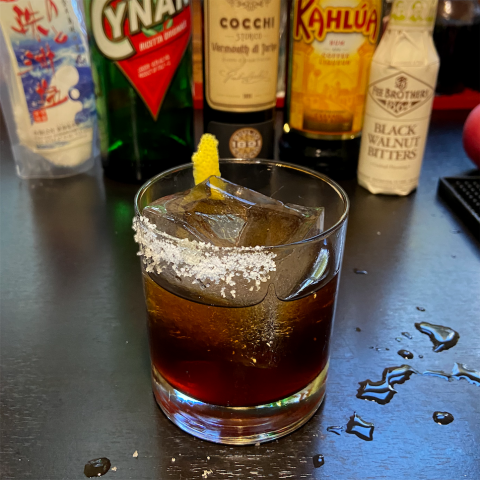Italian espresso martini
Chill a Nick & Nora glass with ice and water and set aside.
Brew a shot of espresso, pour the shot into a shaker over ice to chill, and quickly strain the ice out to avoid excess dilution.
Add the Averna and Kahlúa to the shaker with fresh ice, and shake vigorously to foam the espresso.
Strain into the chilled Nick & Nora glass.
Garnish with 3 coffee beans.


